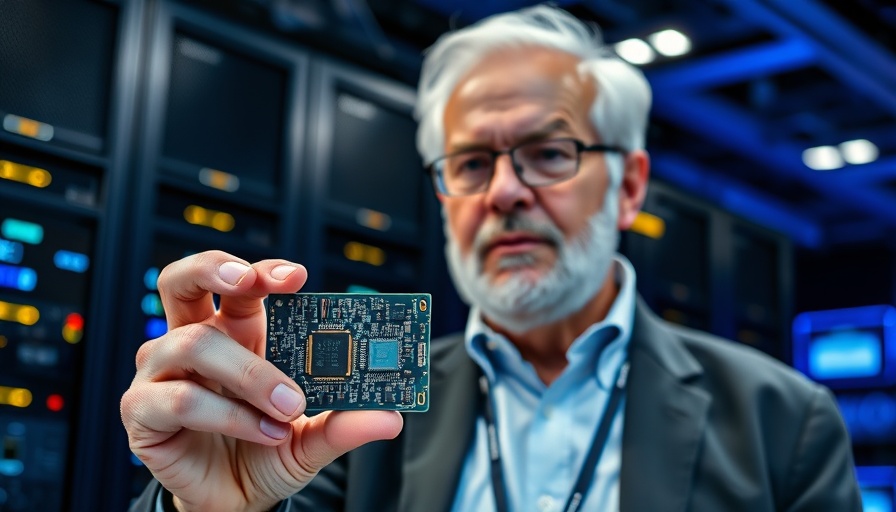
Nvidia's Time-Honored Investment in Innovation
The world of technology is often shaped by groundbreaking ideas and moments of inspiration. One such pivotal moment occurred over a decade ago when AlexNet, a revolutionary neural network architecture developed by Alex Krizhevsky, Ilya Sutskever, and Geoffrey Hinton, won a significant image recognition competition in 2012. This win didn't just mark another milestone for AI; it sparked Nvidia's deep commitment to the autonomous vehicle industry.
The Legacy of AlexNet
AlexNet's architecture was designed to facilitate the processing of vast amounts of visual data, enabling machines to identify and classify objects with remarkable accuracy. This 84.7% accuracy in the ImageNet competition ignited renewed interest in deep learning, essentially laying the groundwork for advancements in computer vision.
According to Nvidia CEO Jensen Huang, the moment he witnessed the capabilities of AlexNet, he was compelled to invest heavily in autonomous driving technologies—a decision that would come to redefine the company's trajectory. “It was such an inspiring moment,” Huang stated during a keynote at GTC 2025. The moment fueled Nvidia’s ambition to create cutting-edge technologies for self-driving cars, a journey that has spanned more than ten years.
Growing Partnerships and Influence in Automotive Tech
Nvidia has since formed extensive collaborations with competing interests across the automotive landscape. Tesla, Waymo, and Volvo are just a few of the companies harnessing Nvidia’s graphical processing units (GPUs) and systems, which serve as the backbone for data centers processing enormous volumes of vehicle data.
Moreover, automotive giants such as GM and Toyota are increasingly leaning on Nvidia’s integrated systems, like the Drive Orin and supportive operating system DriveOS, which enhance the safety and capability profiles of their vehicles. This collaborative approach has embedded Nvidia's DNA deeply within the automotive sector.
Technological Paradigm Shift
The implications of Nvidia's advancements touch on various aspects of society—from improved safety on roads to the broader integration of AI into daily life. These technologies aren't merely futuristic visions; they are evolving rapidly and serve as key components in the ongoing push for smarter, safer transportation solutions.
This shift has illustrated the potential for AI to fundamentally alter traditional industries and society's interactions with technology. The ongoing advancements in automated driving fueled by Nvidia's innovations suggest that the integration of AI into human mobility is not just a trend—it's an emerging standard.
Looking Ahead: Autonomous Vehicles and AI
As the technology matures, the focus will potentially shift from purely technical implementation to societal implications. How will the increasing prevalence of self-driving technology impact jobs in transportation? What regulations will be necessary to ensure public safety and trust?
In light of these considerations, experts argue it is essential for policymakers, technologists, and consumers to stay engaged in discussions surrounding the ethical ramifications of such technologies. Citizens must also become informed about how these transformations might affect their lives in tangible and profound ways.
The Significance of Continued Innovation
The story of AlexNet serves as a reminder of the unpredictable nature of innovation. One moment of inspiration has ripple effects that can resonate across entire industries. Nvidia’s journey, spurred by the legacy of AlexNet, offers insights into how past accomplishments can serve as pillars of future advancements.
Staying updated on technological advancements, such as autonomous vehicles, allows individuals and businesses to prepare for the future while fully understanding the potential these innovations hold for improving life quality. Continuous engagement with these topics empowers us to take proactive roles in shaping the future as new opportunities arise.
Conclusion
Nvidia's evolution from a visual computing firm into a powerhouse replicating the autonomy of vehicles highlights the dynamic interplay of technology and innovation. Driven by fundamental breakthroughs and collaborative efforts, we are on the brink of a transportation revolution shaped by AI. Keeping pace with these trends ensures that we are better equipped to navigate the exciting landscape that lies ahead.
 Add Row
Add Row  Add
Add 



Write A Comment